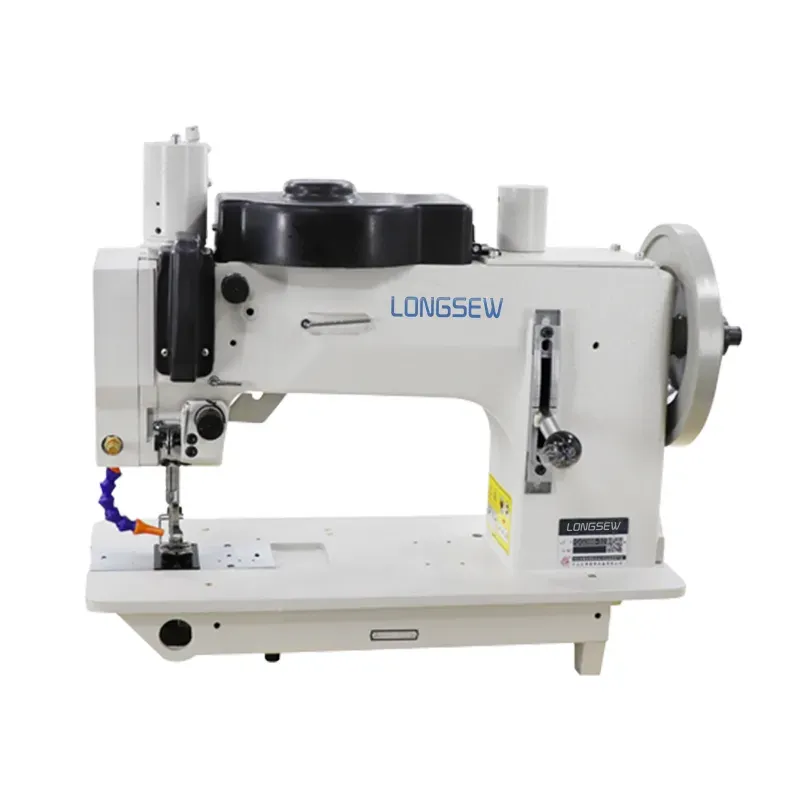cylindrical sewing machine
The Evolution and Impact of the Cylindrical Sewing Machine
In the world of textiles and garment manufacturing, the cylindrical sewing machine has emerged as a revolutionary tool, transforming the way clothing and fabric products are conceived, designed, and produced. This specialized sewing machine is primarily used for creating tubular items, such as sleeves, leg openings, and various types of circular or cylindrical products in the apparel industry. Understanding the evolution and significance of the cylindrical sewing machine provides insights into how it has shaped modern garment manufacturing.
Historical Background
The roots of sewing machines trace back to the early 19th century, with inventors like Thomas Saint and Elias Howe paving the way for mechanized sewing. However, it wasn’t until the late 20th century that innovations led to the development of the cylindrical sewing machine. This machine was designed to handle tubular fabrics efficiently, which were increasingly used in the clothing industry as fashion evolved.
The introduction of the cylindrical sewing machine represented a response to the growing demand for speed and efficiency in production. Traditional flat-bed sewing machines were limited in their ability to work on rounded or tubular materials, making them inefficient for certain types of garment production. The cylindrical machine enabled manufacturers to streamline their processes, enhancing productivity and reducing labor costs.
Design and Functionality
The cylindrical sewing machine is characterized by its unique shape, which allows for a 360-degree sewing area. Unlike flat-bed machines, which require the fabric to be manipulated around the machine, cylindrical machines enable the fabric to rotate freely, facilitating the sewing of curves and edges without complex maneuvering. This design is particularly advantageous for seaming tubular items like cuffs and collars, where precision and consistency are paramount.
Most cylindrical sewing machines come equipped with advanced features such as automatic thread trimming, tension adjustment, and programmable stitch patterns. These enhancements not only improve the quality of stitching but also contribute to a more efficient workflow. Advanced machines integrate electronic controls that allow for real-time monitoring and adjustments, further optimizing the sewing process and minimizing errors.
cylindrical sewing machine

Applications in the Apparel Industry
Cylindrical sewing machines are integral to various facets of the apparel industry. They are notably prevalent in the production of sportswear, intimate apparel, and any garment requiring a seamless finish. For instance, in the production of leggings and fitted athletic wear, the seamless design provided by cylindrical sewing machines eliminates bulky seams, resulting in a more comfortable fit.
In addition to clothing, cylindrical sewing machines also serve in the production of non-apparel items, including bags, tents, and other fabric-based products. Their versatility extends beyond clothing, making them invaluable in industries that rely on textiles.
Benefits and Challenges
The benefits of cylindrical sewing machines are manifold. They significantly increase production speed, reduce fabric waste, and enhance the quality of finished products. As a result, manufacturers can meet consumer demand for high-quality goods without sacrificing efficiency. Moreover, these machines help in maintaining consistency across large production runs, which is essential for brand identity and customer satisfaction.
However, the reliance on cylindrical sewing machines is not without challenges. The initial investment for high-quality machines can be significant, and training operators to use them effectively requires time and resources. Additionally, as technology evolves, manufacturers must continuously adapt to remain competitive, which can lead to difficulties for smaller businesses in keeping up with technological advancements.
Conclusion
The cylindrical sewing machine has undeniably altered the landscape of garment production, offering solutions that address both efficiency and quality. As the apparel industry continues to evolve, the role of these machines will likely expand, introducing new technologies and methods to further enhance production capabilities. Embracing innovation while addressing the challenges that come with it will define the future of garment manufacturing and solidify the cylindrical sewing machine’s place in this ever-changing field. With sustainability and consumer demand at the forefront, the ongoing evolution of this machinery will be crucial in shaping the industry for years to come.
-
Heavy Duty Leather Sewing Machine: A Must-Have for Professional LeatherworkNewsMay.28,2025
-
Leather Sewing Machine: Essential for High-Quality LeathercraftNewsMay.28,2025
-
Extra Heavy Duty Sewing Machine for Premium Leather ApplicationsNewsMay.28,2025
-
Walking Foot Cylinder Arm Sewing Machine: Precision and Power CombinedNewsMay.28,2025
-
Industrial Cylinder Arm Sewing Machine: Engineered for High-Performance StitchingNewsMay.28,2025
-
Cylinder Bed Sewing Machine: A Powerful Solution for Precision StitchingNewsMay.28,2025
-
Zigzag Sewing MachineNewsMay.12,2025





























